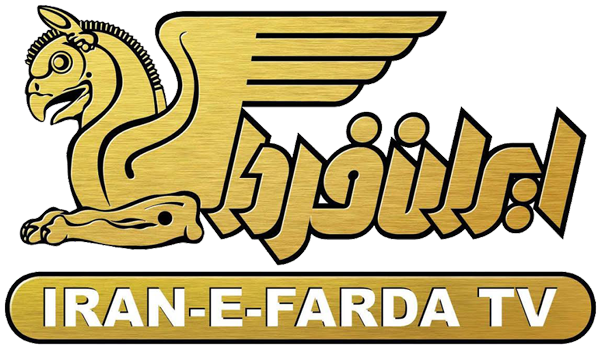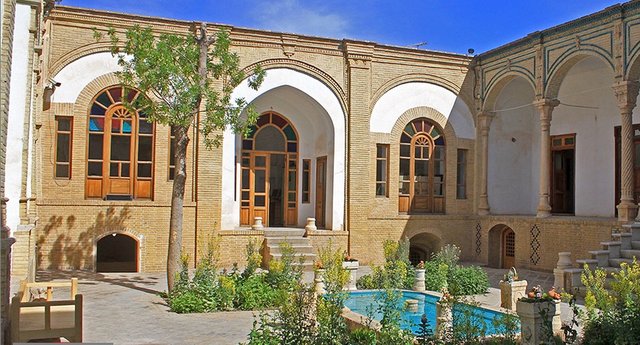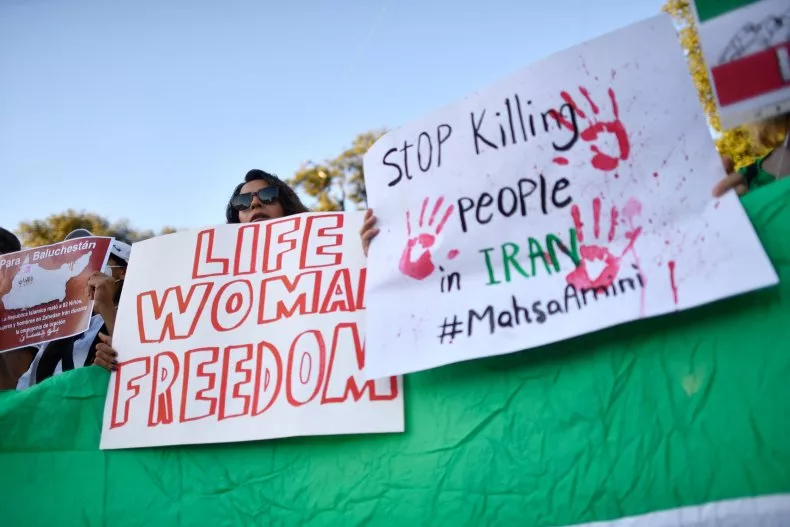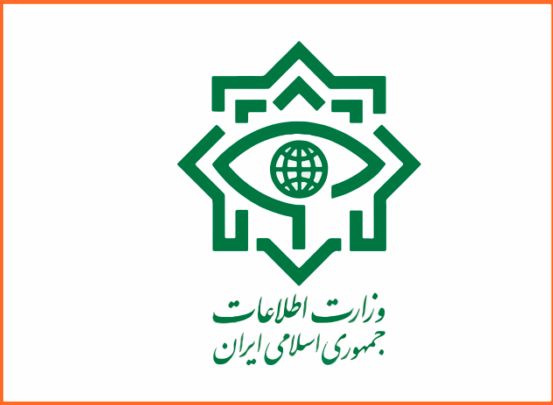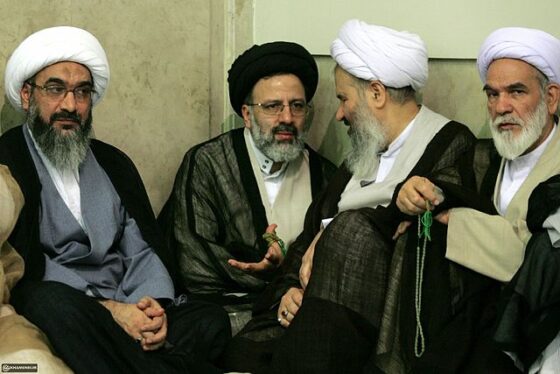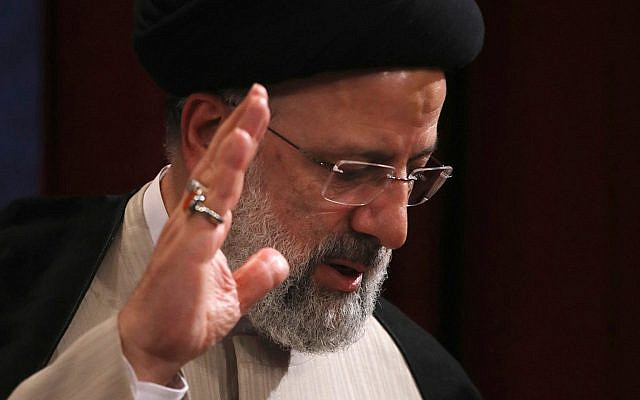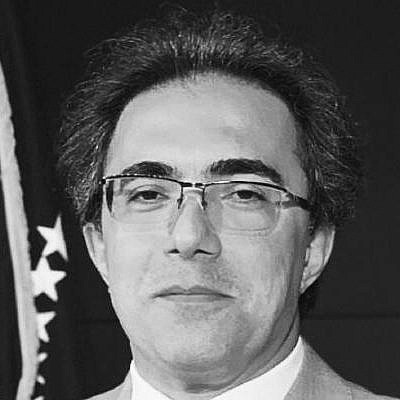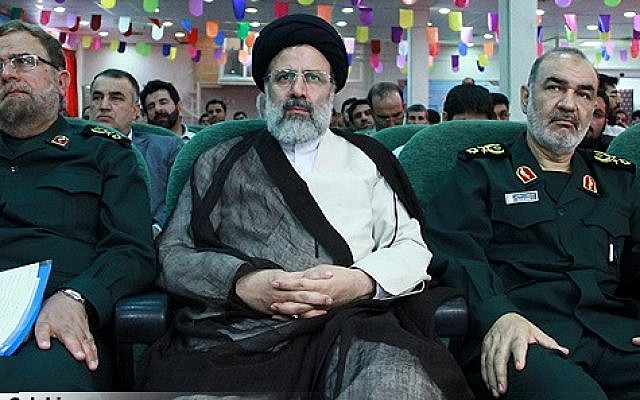No Country Thrives on Instability Like Iran
Published on: 2021-03-27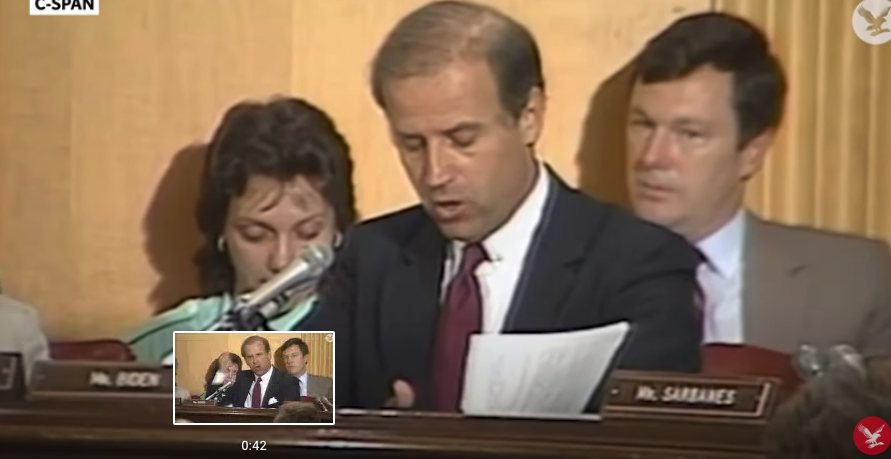
Karim Sadjadpour – 03 /25/2021
Senior fellow at the Carnegie Endowment for International Peace
The Islamic Republic needs America as an enemy. The U.S. needs a strategy to win a cold war.
Before he became president, Joe Biden spent decades seeking reconciliation in the Middle East. By his second term as vice president, his frustration with feuding nations and factions was palpable. “Notwithstanding all of the hundreds of hours I and others spent with each of their leaders, they didn’t resolve a core problem of how the hell they’re gonna live together,” he told The New Yorker in 2014. “We can’t want unity and coherence … more than they want it.”
Today Biden’s presidential mandate is rebuilding unity and coherence in America, but Middle East crises will invariably beckon him. Foremost among these potential entanglements is an Iranian regime—eager for sanctions relief, but committed to maintaining its cold war with the United States—that has played an outsize role in every presidential administration since Jimmy Carter’s.
“At times during my administration we gamed out the scenarios for what a conflict with Iran would look like,” Barack Obama writes in his memoir A Promised Land. “I left those conversations weighed down by the knowledge that if war became necessary, nearly everything else I was trying to achieve would likely be upended.” Obama’s strategy was to negotiate a 2015 multinational agreement that successfully curtailed Iran’s nuclear program. Obama believed, his CIA director John Brennan wrote in his 2020 memoir, Undaunted, that the nuclear deal was “essential not only for regional stability but also to strengthen the influence of Iranian moderates, especially Iranian president Hassan Rouhani and Foreign Minister Mohammed Javad Zarif.”
Under President Donald Trump, the U.S. tried the opposite tack, exiting the nuclear deal and instead trying to coerce Tehran into capitulation or collapse. “Iran will be forced to make a choice,” Secretary of State Mike Pompeo said in 2018. “Either fight to keep its economy off life support at home or keep squandering precious wealth on fights abroad. It will not have the resources to do both.” Yet Iran’s domestic brutality and regional ambitions continued, and its nuclear program expanded.
Today Biden must contend with an Iran that is advancing toward nuclear-weapons capability, is directly implicated in the world’s worst humanitarian crises, and gains leverage against other nations by threatening global economic and political stability. Tehran’s Syrian client, the dictator Bashar al-Assad, has fueled the greatest global refugee crisis since World War II, which in turn has fanned right-wing populism across Europe. The ongoing proxy war in Yemen between Saudi Arabia and another of Iran’s clients, the Houthi movement, has created a horrifying humanitarian crisis and the return of once-eradicated diseases. Iran’s proven ability to launch precision missile and drone strikes against Saudi oil installations is a looming threat to world energy supplies and a harbinger of Middle East wars to come. Iran’s increasingly sophisticated cyberattacks have successfully targeted U.S. elections and commerce, as well as the critical infrastructure of U.S. allies.
While Trump’s experience with Iran proved that pressure alone does not work, Obama’s experience illustrated the challenges of engaging a regime whose primary interest, apart from staying in power, is opposing American influence. Given the perils of both action and inaction, Biden’s Iran strategy requires both the flexibility of a gymnast and the precision of a surgeon to cooperate with Iran when possible, confront Iran when necessary, and contain Iran with the help of partner nations.
Consider just one of the challenges: America’s eagerness to coax Tehran back into nuclear compliance, and our fear of jeopardizing the nuclear deal’s revival, might inhibit—whether consciously or unconsciously—our commitment to deter Iran’s regional provocations and domestic brutality, signaling to Iran and its proxies that it can continue to act with impunity. At the same time, our efforts to discourage Iranian provocations risk pulling us into regional proxy wars that we have no interest in fighting and that Iran can easily escalate.
Despite the urgent security challenges that Iran presents, a U.S. strategy that focuses only on the nuclear and regional ambitions of the Iranian government while overlooking the democratic ambitions of the Iranian people ignores the lessons of how the Cold War ended. Can the United States use pressure and diplomacy to effectively constrain not only Iran’s nuclear program and regional influence, but also its domestic authoritarianism? This is Biden’s challenge. He needs a strategic framework that sees Iran for what it is
The Nature of the Islamic Republic
After the 1979 revolution transformed Iran from a pro-American monarchy into an anti-American theocracy, seven U.S. presidents tried and failed to change the U.S.-Iran relationship, Iran’s behavior, or the Iranian regime altogether. Throughout this period the Islamic Republic has proved adept at surviving but, like many revolutionary regimes, incapable of reforming. American expertise about Iran has suffered from four decades of diplomatic estrangement—the State Department has more Albanian speakers than Persian speakers—but the continuity of Iran’s revolutionary ideology reveals the character of the Iranian regime.
Iran’s physical size (75 times larger than Israel, four times larger than Germany), geostrategic location, enormous natural resources, ideological zeal, and cultivation of foreign militias have afforded it a major role in a wide range of global-security and humanitarian challenges, including Islamist radicalism, energy security, cyberwarfare, nuclear proliferation, and wars in Syria, Yemen, and Afghanistan. Although Henry Kissinger once observed that “there are few nations in the world with which the United States has less reason to quarrel and more compatible interests than Iran,” Tehran’s leaders have continually prioritized opposition to the United States ahead of the welfare and security of its people. This was evident most recently when the Iranian supreme leader, Ayatollah Ali Khamenei, banned American-made COVID-19 vaccines, despite Iran being among the countries worst hit by the virus.
The 81-year-old Khamenei is among the world’s longest-serving autocrats. Since inheriting power from Ayatollah Ruhollah Khomeini in 1989, he has not left Iran, and his careful cultivation of the Islamic Revolutionary Guard Corps—Iran’s most powerful institution—has helped him enfeeble potential rivals, including four Iranian presidents, and crush dissent. Despite appearances of competing power centers, Khamenei also has effective control over the Islamic Republic’s Guardian Council, Assembly of Experts, and Expediency Council—all institutions that nominally provide oversight but actually serve to buttress his authority.
Like Trump’s now-suspended Twitter feed, Khamenei’s public statements have proved a reliably accurate window into the leader’s soul. Khamenei, whose vitriol against the United States has been remarkably consistent for more than four decades, couches his anti-Americanism in revolutionary themes of justice and anti-imperialism. But like many autocrats, he serves his self-interest by maintaining an external adversary. As the American diplomat George Kennan once observed about the U.S.S.R., “The menace confronting Soviet society from the world outside its borders is founded not in the realities of foreign antagonism but in the necessity of explaining away the maintenance of dictatorial authority at home.”
Former Iranian President Mohammad Khatami, who favored détente with the United States, told me in 2008 that Khamenei would insist to him that the Islamic Republic “needs enmity with America, the revolution needs enmity with America.” The political scientist Mahmood Sariolghalam, an erstwhile adviser to senior Iranian officials including President Hassan Rouhani, wrote in a 2018 essay that anti-Americanism is the “raison d’être” of the Islamic Republic of Iran. “This has less to do with the nature of the American system,” he wrote, “and more to do with the fact that Iran has turned anti-Americanism into an identity.” Ideological opposition to the United States, Sariolghalam explained, “serves to perpetuate Iran’s revolutionary domestic political order.”
So long as Khamenei remains the supreme leader, the United States can at best expect tactical compromises from his government, not major shifts in the country’s internal and external policies. Khamenei has long believed that reforming the ideological principles of the Islamic Republic would accelerate, not prevent, its collapse, just as perestroika hastened the Soviet Union’s demise. His instincts are corroborated by some of history’s most astute political philosophers, including Machiavelli and Tocqueville, who argued that “the most perilous moment for a bad government is one when it seeks to mend its ways.” Even Khamenei’s death might not alter Iran’s near-term disposition, as the next supreme leader is likely to be an Iranian Raul Castro—a successor handpicked for his commitment to the status quo.
Even as the Islamic Republic continues to confound outside observers, decades of elections that produce no lasting change have shown Iranian citizens how power is really exercised in Tehran. Two parallel regimes are working in concert. A deep state of security and intelligence forces, reporting to Khamenei, will continue to build nuclear facilities, cultivate regional militias, seize foreign ships, crush popular dissent, take Western hostages, and conduct assassinations. A weak state—consisting of apparatchiks and civil servants authorized to speak to Western officials—will continue to vehemently deny and subsequently defend those activities, of which they usually have no advanced knowledge. Rather than a genuine battle between “hard-line” and “reformist” factions, Iran’s deep state will continue to have power without accountability, while Iran’s weak state will continue to lack power and deflect accountability.
A Three-Pronged U.S. Strategy
Although Iran will continue to trigger the most polarizing foreign-policy debates in Washington, the broad contours of a bipartisan Iran strategy are apparent. Republican members of Congress passionately oppose both the Iranian regime and Obama’s nuclear deal, but they also recognize that their constituents oppose another U.S. conflict in the Middle East. While American Democrats are generally supportive of engaging Iran and returning to the nuclear deal, 70 percent of them have an “unfavorable” view of Iran, and even prominent progressives have concluded that, “like the Soviet Union 30 years ago, the Iranian regime sooner or later will crumble under the weight of its own failures.”
Indeed, while the scale of today’s Iranian threat—at least to the United States—pales in comparison to the danger the Soviet Union posed after World War II, the strategy used to contain, counter, and communicate with the U.S.S.R. remains the soundest template for Iran. It is a strategy that supports diplomacy and seeks to avoid war, while mindful that the Iranian regime’s hostility toward the United States is driven by its own self-interest. Like the Soviet Union, the Islamic Republic of Iran is willing to subject its population to enduring repression and economic hardship rather than compromise its ideological principles.
In his classic work Strategies of Containment, the Yale historian John Lewis Gaddis noted that America’s successful containment of the Soviet Union—conceived by the famed Cold Warrior George Kennan—had three critical parts: fortifying American allies and partners (including Iran, in 1946); fragmenting the international Communist movement; and employing both pressure and inducements to attempt to “modify Soviet behavior.” These objectives were not in tension with one another, but rather cohered into a mutually reinforcing strategy. Kennan implored the United States to be firm, patient, and confident that American democracy would eventually prevail over Soviet dictatorship.
A variation of this three-pronged approach should be the basis of Biden’s policy toward Iran. It would be unrealistic to expect nuclear nonproliferation, regional security, and Iranian civil rights to be discussed in one negotiation, But these three areas should be viewed as complementary, rather than conflicting, pieces of a unified strategy. Such an approach will help ensure that, if Biden manages to revive the nuclear deal, the terms will outlive his presidency.
Deferring Iran’s Nuclear Challenge
Because virtually 100 percent of Iranian trade is with countries other than the United States, American attempts to contain Iran will fail if Tehran believes that it has reliable economic and strategic partners in Asia, Europe, and Russia. History has shown, however, that building a global consensus that Iran is in the wrong first requires a clear-eyed U.S. effort to engage the Islamic Republic.
In A Promised Land, Obama recounts how, weeks after taking office in 2009, he sent a secret letter to Khamenei, suggesting a U.S.-Iran dialogue on a range of issues, including Iran’s nuclear program. Khamenei’s hostile response, Obama writes, was tantamount to a “middle finger.” The Obama administration’s numerous unrequited overtures to Iran—coupled with U.S. intelligence outing an Iranian clandestine nuclear site—would play a critical role in persuading Europe, China, and Russia that the chief obstacle to compromise was Tehran, not Washington. This set the table for the global pressure campaign that, together with rigorous diplomacy, spawned the 2015 Iran nuclear deal, formally known as the Joint Comprehensive Plan of Action, or JCPOA
The Trump administration had four years to prove the alternative thesis—that an increase in American pressure and an absence of American diplomacy could break the Iranian regime. Although Trump subjected Iran to enormous economic deprivation and humiliation—including the January 2020 assassination of its top military commander, Qassem Soleimani—its regime closed ranks, its nuclear program grew twelvefold, and its regional influence remained intact despite diminished expenditures. In short, the lone policy that has exerted any influence over Iranian behavior has been a combination of significant international pressure and tough U.S. diplomacy.
The Biden administration’s foremost challenge at the moment is how to revive the nuclear deal.
In theory, this should not be difficult; Washington wants to undo Iran’s nuclear progress, and Iran cannot reverse its economic decline without a full or partial restoration of an agreement. Although the domestic politics of both Washington and Tehran, enormous mutual mistrust, and tactical disagreements have so far impeded the deal’s revival, these obstacles should eventually prove surmountable.
What will prove far more challenging is the Biden administration’s stated intention to “lengthen and strengthen” the nuclear deal—that is, to extend sunset clauses that expire as early as 2023 and to expand the scope of the deal to include nonnuclear concerns, such as Iran’s dissemination of precision missiles to its regional proxies. Critics of Biden’s approach believe that his administration should attempt to strengthen the deal before rejoining it—using the Trump administration’s sanctions as leverage—rather than afterward. Regardless of the sequencing, any U.S. attempts to fortify the agreement will invariably be met with fierce opposition from Iran; the same pressure the Biden administration must cede in order to revive the JCPOA might once again need to be wielded in order to improve the agreement.
For advisers who favor a swift return to the JCPOA, the calculation is simple: Should Biden begin his presidency with a potential escalatory crisis with Iran in the middle of a pandemic, or should he defer that possibility? Biden’s (mostly Republican) critics, in turn, cite Henry Kissinger’s dictum that “competing pressures tempt one to believe that an issue deferred is a problem avoided; more often it is a crisis invited.”
The task of potentially reassembling a global coalition to strengthen the nuclear deal will prove challenging, but the European Union, Russia, and China all support the underlying goal of preventing an Iranian bomb. Marshaling a global response to Iran’s regional ambitions will be harder, because China prefers neutrality, Russia is allied with Iran in supporting Assad in Syria, and Europeans fear provoking Tehran. Nevertheless, Iran remains among the world’s most strategically isolated nations. Russia has ignored Israel’s repeated attacks on Iranian outposts in Syria, Chinese trade with Saudi Arabia and the United Arab Emirates exceeds its trade with Iran, and European popular views on Iran—which is holding several European nationals hostage—are just as jaundiced as American popular opinion. Russia and China are particularly sensitive about respecting national sovereignty, often the gravest concern of Iran’s regional rivals.
How Iran Fills Regional Power Vacuums
No other region in the world threatens global stability like the Middle East, and no country in the Middle East has benefited more from regional instability than Iran. Tehran’s sizable influence in four embattled Arab countries—Syria, Iraq, Lebanon, and Yemen—is attributable to the power vacuums created by the 2003 U.S. invasion of Iraq, the 2011 Arab uprisings, and decades of failed governance. Arab disorder facilitates Iranian ambitions, and Iranian ambitions exacerbate Arab disorder.
Iran’s regional policy has three pillars: opposing the United States, opposing Israel, and opposing Saudi Arabia. Tehran has pursued these ends by cultivating a network of foreign militias—modeled on the Lebanese organization Hezbollah—whose total size is estimated at between 50,000 and 200,000 men. As the Middle East’s lone theocracy, Iran has managed to harness Islamist radicalism—both Shia and, at times, Sunni—more effectively than any of its peers. Indeed, although the Iran-Saudi rivalry is commonly viewed as a sectarian war between Shia Iran and Sunni Saudi Arabia, Tehran’s huge asymmetric advantage over Riyadh is that virtually all Shia radicals are willing to fight for Iran, whereas virtually all Sunni radicals, including the Islamic State and al-Qaeda, want to overthrow the Saudi government.
While Iran-Saudi détente might be possible, Tehran has made clear that it will never recognize Israel. Iran’s leaders routinely call Israel a “cancerous tumor” that must be “annihilated,” engage in Holocaust revisionism, and write “Death to Israel” on their weaponry. In addition to talking the talk, Tehran has provided hundreds of millions of dollars to Palestinian Islamic Jihad and Hamas; has amassed, via Hezbollah, more than 100,000 rockets and missiles in Lebanon that are pointed at Israel; and is actively building military bases in Syria to open an additional front against the Jewish state. Israel has retaliated by allegedly conducting half a dozen assassinations of nuclear scientists inside Iran, more than 200 bombings of Iranian outposts in Syria, and devastating cyberattacks that have sabotaged Iranian infrastructure and nuclear facilities. “In war and fighting,” Iranian Foreign Minister Javad Zarif once told me, citing a Persian proverb, “they don’t distribute sweets.”
Although Iranian influence in the Middle East cannot be eliminated, it can be more effectively exposed, countered, and contained. The JCPOA proved that a combination of global pressure and sustained American diplomacy in pursuit of a viable end game—restraining rather than eradicating Iran’s nuclear program—was achievable. A similar formula should be used to meaningfully restrain, rather than wholly eradicate, Iran’s regional influence. This would not require Arab nations or citizens to outwardly accept Iranian violations of their sovereignty. But Arab governments would have to seek enforceable limits on specified forms of misconduct by Tehran, rather than simply demanding, as Saudi Arabia’s then foreign minister flatly did in 2018, that Iran “get out” of the Arab world.
The JCPOA was a highly detailed 159-page document that carefully described how Iran’s nuclear program would be restrained and subjected to greater transparency. America’s regional allies must provide similarly concrete prescriptions for how to limit Iranian support for regional proxies and violations of their sovereignty. Just as the JCPOA offered Tehran positive inducements for compromise, Gulf Arab nations should be prepared to talk not only about their concerns and demands, but also about avenues for mutual cooperation. Climate change—which could soon render parts of both Iran and the Arab world too hot for human habitability—is an obvious start.
Mutual fears about Iran and a U.S. withdrawal from the Middle East helped the Trump administration midwife the normalization of relations between Israel and several Arab nations, including the United Arab Emirates and Bahrain. Yet the most potent defense against Iranian regional encroachment will be the building of cohesive Arab states and national identities, just as the nationalism of Soviet subjects played a critical role in countering Communist ideology.
Although Lebanese Hezbollah and elements of Iraq’s Popular Mobilization Forces effectively operate as wings of Iran’s Revolutionary Guards, Tehran can no longer take for granted its continued popular support among Arab Shia. In November 2019, Iraqi protesters attacked and set fire to Iranian consulates in Najaf and Karbala—two Shiite shrine cities that are longtime Iranian strongholds—and Lebanese Shiites protested Hezbollah in the southern city of Nabatieh. Opinion polls show that more than half of Arab Shia now hold an “unfavorable” view of Iran. Despite their grievances at home, few Arab Shia view Iran’s theocracy as a model to emulate.
Arms Controllers Didn’t End the Cold War
After Trump’s first year in power, Americans generally understood that his character was unlikely to change. After 42 years in power, many Iranians understand even more clearly that the character of the Islamic Republic is unlikely to change. Virtually all of the conduct the regime has exhibited since its inception—hostage taking; the cultivation of regional militias; the persecution of women, religious minorities, LGBTQ people, and free thinkers—have proceeded with the same intensity. Tehran’s official slogan of “Death to America” has also continued uninterrupted throughout both Republican and Democratic U.S. administrations. In the words of former U.S. Ambassador to Russia Michael McFaul, “Arms controllers didn’t end the Cold War with the Soviet Union; democrats inside Russia and other Soviet republics did.” Similarly, the U.S.-Iran cold war will likely be concluded not by American diplomats but by Iranian democrats.
Until now, Washington’s attempts to elicit political change in Tehran have failed. Efforts to empower reformists within the Iranian regime against hard-line rivals have shown little signs of success; reformists lack the will, and hard-liners have all the guns. U.S. attempts to incite uprisings among unarmed, unorganized, and leaderless Iranian civilians against a heavily armed and organized repressive apparatus have also achieved little. The Islamic Republic has repeatedly shown willingness to throttle the internet and murder thousands of its citizens in the dark, as it did most recently in November 2019. In authoritarian countries, change requires not only popular pressure but also divisions within the elite. When the entirety of a regime and its security apparatus believe that they must either kill or be killed—such as in Syria—they unreservedly embrace option A.
Although the United States lacks the ability to reform or remove the Islamic Republic, it does have the capacity to meaningfully champion Iranian civil rights. Just as the Reagan administration negotiated arms-control agreements with Soviet leaders while also expressing solidarity with freedom-seeking Soviet subjects, renewed nuclear talks between the United States and Iran should not deter the Biden administration from countering Iranian authoritarianism, such as Tehran’s aspirations to control the information and communications of its citizens by building a walled-off national internet akin to China’s. The Biden administration should also work with European and Asian allies to ensure that their eventual resumption of business ties with Iran does not simply enrich Revolutionary Guard companies and cronies at the expense of Iranian civil society.
Opponents of the Islamic Republic, both inside Iran and in the region, fear that a revival of the nuclear deal will strengthen the regime. Yet history has proved that political dissent is not usually triggered by crushing poverty, but—according to what’s known as the J-curve theory—when a society’s improving economic circumstances lead to elevated expectations that go unfulfilled. For this reason, the near-term economic improvements that might result from a removal of U.S. sanctions are likelier in the medium and long term to destabilize the Islamic Republic rather than entrench it. The more that Iranians understand that what stands between them and a better future is their own leadership, not Washington’s, the more the country’s most potent ideology—Iranian nationalism—will be harnessed against the regime rather than in service of it.
For this reason, the Biden presidency presents both an opportunity and a challenge to Tehran’s leadership. A revival of the nuclear deal might help reverse Iran’s economic decline, but it would also make it more difficult for the Islamic Republic to continue blaming the United States for its myriad failures. As Kylie Moore-Gilbert, an Australian academic recently released from captivity in Iran, told me, “So many people in prison were breathing a sigh of relief that Trump lost the election. The Revolutionary Guards, however, were undoubtedly disappointed.”
While the Guards’ use of fear and coercion might be able to indefinitely sustain the Islamic Republic’s internal contradictions, this should not be mistaken for popular legitimacy. In an impassioned speech during a 1986 congressional hearing on South African apartheid, then Senator Joe Biden told Secretary of State George Schultz that America’s “loyalty is not to South Africa, it’s to South Africans!” Similarly, the Biden administration’s commitment to reviving the Iran nuclear deal should not obscure the fact that America’s loyalty and interests lie not with Iran’s regime, but with its people.
Building the Tunnel
No matter which route the Biden administration chooses, America’s Iran strategy will continue to trigger fierce global disagreement, given the high stakes. It directly impacts the security and well-being of not only tens of millions of Iranians but also tens of millions of Syrians, Iraqis, Lebanese, Yemenis, Israelis, and Gulf Arabs—people who view Iran as either an indispensable ally or an existential threat. For opponents of the Iranian regime, no amount of U.S. pressure will be sufficient; for allies and supporters of the Iranian regime, no amount of U.S. pressure is justified.
In a 2019 essay in The Atlantic, Jake Sullivan—now Biden’s national security adviser—wrote that “the U.S. needs to adopt the foreign-policy version of the serenity prayer: Grant us the wisdom to know the difference between those things we can change and those we cannot.” Throughout America’s 42-year absence from Iran, successive U.S. administrations have at times failed to understand this distinction. Americans can constrain Iran’s nuclear and missile programs; we cannot eliminate them. We should stand for civil and human rights in Iran; we cannot engineer regime change. We can limit and expose destructive Iranian policies in the Middle East; we cannot expunge Iranian influence from the region. We can attempt to manage our differences with Iran; we cannot force a rapprochement with a regime that needs us as an adversary.
As in all dictatorships that lack democratic mechanisms for renewal and use greater repression as their primary tool for managing dissent, history is not on the side of the Islamic Republic. While most modern economies try to better understand how to promote technological innovation, combat climate change, and foster diversity, Iran’s elderly clerical rulers sell fossil fuels to sustain and export an intolerant revolutionary ideology. Iranian officials themselves admit that the resulting brain drain costs the country $150 billion annually, far more than the country’s oil revenue. This economic, political, and social malaise will eventually force a reckoning that U.S. policy should be designed to facilitate, not impede.
The tragic history of modern Iran, and U.S.-Iran relations, evokes the late Israeli Prime Minister Shimon Peres’s observation about the prospects for an Israeli-Palestinian peace deal. “The good news is there is light at the end of the tunnel,” Peres said. “The bad news is there is no tunnel.”
After four decades of the Islamic Republic, the light in Iran is a young, dynamic, educated society that aspires to live like South Koreans, not North Koreans—prosperously and at peace with the world. Although the tunnel from Iranian theocracy to Iranian democracy might take years to build, its completion is the single most important key to transforming the Middle East.
KARIM SADJADPOUR is a senior fellow at the Carnegie Endowment for International Peace, where he focuses on Iran and U.S. foreign policy toward the Middle East. He is an adjunct professor at Georgetown University.
https://www.theatlantic.com/ideas/archive/2021/03/how-win-cold-war-iran/618388/?utm_source=ctw&utm_medium=email&utm_campaign=buttonlink&mkt_tok=MDk1LVBQVi04MTMAAAF8Cnzq2SIGNPZga1cDZa8HVIiIbqJYfVNVCoVCTxVYRy-8hncduoX9py0YcuNg_XdEY2VALg_OlE-ezkWhCe7nJHe6-Hu7BabTGgwFVI9Z8dw
